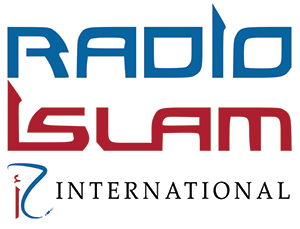Human Face
Allah has created 360 joints (bones) in our bodies which we had discussed in the past week, Were it not for the joints created by Allah the Almighty, man would not have been able to move one bone in his body. The defect in one joint causes a lot of pain and problems.
The facial skeleton is composed of fourteen bones, six paired and two unpaired bones.
So far we have discussed:
● Two nasal bones (protects the nasal cavity)
● Two maxillae (helps to make up the skull)
● Two inferior nasal conchae ( help to warm, and clean the air that passes through the nose)
● Two palatine bones (It provides protection and passage for important nerves and blood vessels.)
● Two Zygomatic Bones
Today what we will discuss is
5 – Lacrimal Bone
The lacrimal bone is the smallest and the most fragile bone of the viscerocranium. It is a paired oblong bone situated in the anterior part of the medial wall of the orbit. The word ‘Lacrima’ is Latin for ‘tear’, so the name of the bone corresponds with its relation to the nearby lacrimal structures.
The bone has two surfaces (lateral and medial) and four borders (anterior, posterior, superior and inferior).
The main function of the lacrimal bone is to provide support for the structures of the lacrimal apparatus, which secretes and drains tears. In addition, the lacrimal bone as an attachment site for the orbicularis oculi muscle.
Specialties Function:
The lacrimal bone is a small, delicate bone located within the orbital region of the skull. While it may not be as prominent as other bones, it plays several important roles in the anatomy and function of the eye and surrounding structures. Here are five specialties related to the lacrimal bone:
1. Ophthalmology: Ophthalmologists specialize in the diagnosis and treatment of eye disorders, including conditions affecting the lacrimal system. They may treat issues such as blocked tear ducts (nasolacrimal duct obstruction) or perform surgeries to address lacrimal bone fractures or other orbital injuries.
2. Otolaryngology (ENT): Otolaryngologists, also known as ear, nose, and throat (ENT) specialists, may deal with conditions affecting the lacrimal system, particularly those related to the nasal passages and sinuses. They may address issues such as chronic sinusitis, which can impact the drainage of tears through the lacrimal ducts.
3. Orbital Surgery: Surgeons specializing in orbital surgery focus on procedures involving the eye socket (orbit) and surrounding structures, including the lacrimal bone. They may perform surgeries to repair fractures, remove tumors, or address congenital abnormalities affecting the lacrimal system.
4. Plastic and Reconstructive Surgery: Plastic surgeons with expertise in craniofacial or orbital reconstruction may be involved in treating injuries or defects involving the lacrimal bone. They may perform procedures to restore facial symmetry, repair orbital fractures, or reconstruct the tear drainage system.
5. Radiology: Radiologists play a crucial role in diagnosing and evaluating conditions affecting the lacrimal bone and surrounding structures using imaging techniques such as X-rays, CT scans, and MRI scans. They help identify fractures, tumors, or other abnormalities that may require further evaluation or treatment by specialists.
These specialties work together to ensure the proper function and health of the lacrimal system, which is essential for maintaining eye lubrication, protecting the ocular surface, and facilitating proper drainage of tears.





0 Comments